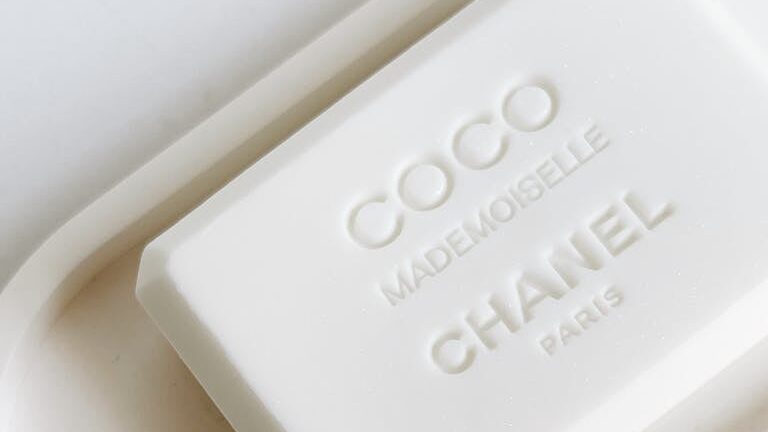Who Was Coco Chanel? | Her Life As A Fashion Designer
Gabrielle Bonheur Chanel, known as Coco Chanel, was a seminal French fashion designer whose influence on the fashion industry remains profound to this day. She was born on August 19, 1883, and over the course of her life, she redefined women’s fashion with her innovative designs that embodied elegance, comfort, and simplicity.
Chanel is so respected as a fashion designer because she was responsible for a number of revolutionary concepts, including the famous “little black dress,” the Chanel No. 5 perfume, and her suit designs, which have become iconic.
Coco Chanel started her career in fashion in the early 20th century and quickly became known for her forward-thinking approach to women’s wear. Her contributions to the industry were not only in design but also in how she conducted her business, turning her name into a premier brand synonymous with luxury and style. Chanel’s designs liberated women from the constraints of the corset and introduced a sporty, casual chic to the forefront of fashion that had never been seen before.
Key Takeaways
- Coco Chanel revolutionized women’s fashion with her elegant and simplistic designs.
- She created several timeless pieces, including the Chanel suit and the little black dress.
- Chanel’s life was marked by her successful brand, controversial personal life, and enduring legacy as a style icon.
Childhood in the Orphanage

Born in Saumur, France, in 1883, Chanel was only twelve when her mother passed away. Her father, unable to adequately care for her, left Chanel and her siblings at an orphanage. The nuns at the orphanage taught her to sew, a skill that would become the cornerstone of her career in fashion. Growing up in the stark environment of the orphanage, where conditions often mirrored that of poverty, Chanel’s narrative was poised to become a rags-to-riches story.
Humble Career Beginnings
Gabrielle “Coco” Chanel began her illustrious career in the world of fashion not as a celebrated designer atop the echelons of Parisian high society, but as a humble seamstress. Chanel’s experience as a seamstress began while she was still under the care of the nuns.
After her time in the orphanage, Chanel found work as a seamstress, paving her own path with tenacity and a fine attention to detail. This foundational chapter of her life story is pivotal, as it laid the groundwork for Chanel’s deep understanding of craftsmanship, fabric, and the structure of garments.
In 1910, Gabrielle Chanel opened her first millinery shop, Chanel Modes, at 21 rue Cambon in Paris, thanks to the financial backing of her then-lover, Étienne Balsan. Initially a hatmaker,
Chanel’s designs quickly gained popularity among French actresses, which paved the way for her expansion into clothing design. Her early work distinguished her in the Parisian fashion scene as a tastemaker and an emerging designer to watch.
The Evolution of Chanel’s Style and Comfort in Fashion

Chanel’s unique approach to fashion was marked by a departure from the restrictive corseted silhouettes of the time. In 1913, she introduced the use of jersey fabric for sportswear, traditionally used for men’s underwear, creating garments that were not only stylish but also comfortable and practical. It was a instant success.
This innovation initiated the casual chic aesthetic she would become known for. In the 1920s, Chanel further made her mark with the introduction of the Little Black Dress, an enduring symbol of understated elegance and versatility.
The Chanel Suit, introduced in the 1950s, epitomized her contribution to women’s fashion, combining modernity with timeless style in a form both sophisticated and wearable. Chanel’s commitment to liberating women from the constraints of conventional fashion firmly established her legacy as a pioneer in the industry.
The rise of Coco Chanel’s fashion prominence was partly due to the practicality and simplicity of her designs, which suited the more active lifestyles women adopted as they took on roles traditionally held by men during world war I.
Iconic Contributions and Designs
The Little Black Dress: Chanel introduced the concept of the “little black dress” in the 1920s, a simple yet elegant piece that defied the norms of a time when black was reserved for mourning. This creation attested to her ingenuity, making a once somber color a staple in women’s fashion.
Chanel No. 5: In 1921, Chanel broke new ground by releasing Chanel No. 5, the first fragrance to be marketed under a fashion brand’s name.
Tweed and the Chanel Suit: The Chanel suit became an emblem of her talents—sophisticated, uncluttered lines paired with a tweed jacket, deftly representing the designer’s penchant for borrowing elements from menswear and transforming them into haute couture for women.
Haute Couture: Chanel’s Paris shop evolved into a fashion house where her success burgeoned, thereby cementing her position as a towering figure in the world of haute couture.
Chanel’s Personal Life Was Shrouded With Constroversies

Gabrielle “Coco” Chanel, a towering figure in the fashion industry, maintained a dynamic personal life characterized by influential connections and rumored wartime allegiances, which have been a subject of intense scrutiny and debate.
Her personal life was illustrious as her career in fashion. She was romantically linked to several high-profile individuals, including Étienne Balsan, who provided her with an entree into the world of the French elite, and the Duke of Westminster, one of several men she was rumored to have engaged with in affairs that might have influenced her life and work.
These relationships not only offered Chanel an intimate glimpse into high society but also inspired her designs and business decisions. They were also strategic, helping her navigate the complex social and political landscapes of the time.
Moreover, Chanel’s acquaintance with influential figures such as composer Igor Stravinsky reflected her standing within elite social and artistic circles.
Unfortunately, during World War II, Coco Chanel’s legacy was tarnished by her association with Hans Gunther von Dincklage, a German officer and Nazi spy known as “Spatz”. Their close relationship led to enduring accusations about Chanel’s possible role as a Nazi agent, an identification given her codename “F-7124” by the Abwehr, Nazi Germany’s intelligence organization.
Although Chanel’s involvement with the Nazis appeared motivated in part by personal reasons — such as securing the release of her nephew — the depth of her engagement has been the subject of much analysis and controversy, leaving a complex shadow on her post-war legacy.
Overall, Chanel was well known for being confident and as much as her private life was publicized, she still remained much of a mystery
Posthumous Recognition and Tributes
Since her death in 1971, Coco Chanel has been honored with various tributes. She posthumously received the Neiman Marcus Fashion Award in 1957, signifying her long-lasting influence in fashion.
The Chanel brand has grown in her absence, with Karl Lagerfeld taking the reins for several decades and continuing to build upon Chanel’s foundation until his own passing in 2019. Tributes have spanned from biographical films to books, exemplifying her permanent place in cultural history.
Chanel’s legacy within the fashion world is profound, continuing to shape the ethos of simplicity and elegance in modern design. Designers often cite Chanel as an inspiration, noting her revolutionary approach to women’s fashion.






